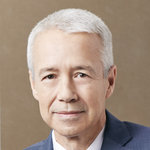
Johnson & Johnson
NYSE:JNJ


| US |

|
Johnson & Johnson
NYSE:JNJ
|
Pharmaceuticals
|
| US |

|
Berkshire Hathaway Inc
NYSE:BRK.A
|
Financial Services
|
| US |

|
Bank of America Corp
NYSE:BAC
|
Banking
|
| US |

|
Mastercard Inc
NYSE:MA
|
Technology
|
| US |

|
UnitedHealth Group Inc
NYSE:UNH
|
Health Care
|
| US |

|
Exxon Mobil Corp
NYSE:XOM
|
Energy
|
| US |

|
Pfizer Inc
NYSE:PFE
|
Pharmaceuticals
|
| US |

|
Palantir Technologies Inc
NYSE:PLTR
|
Technology
|
| US |

|
Nike Inc
NYSE:NKE
|
Textiles, Apparel & Luxury Goods
|
| US |

|
Visa Inc
NYSE:V
|
Technology
|
| CN |

|
Alibaba Group Holding Ltd
NYSE:BABA
|
Retail
|
| US |

|
3M Co
NYSE:MMM
|
Industrial Conglomerates
|
| US |

|
JPMorgan Chase & Co
NYSE:JPM
|
Banking
|
| US |

|
Coca-Cola Co
NYSE:KO
|
Beverages
|
| US |

|
Walmart Inc
NYSE:WMT
|
Retail
|
| US |

|
Verizon Communications Inc
NYSE:VZ
|
Telecommunication
|
Utilize notes to systematically review your investment decisions. By reflecting on past outcomes, you can discern effective strategies and identify those that underperformed. This continuous feedback loop enables you to adapt and refine your approach, optimizing for future success.
Each note serves as a learning point, offering insights into your decision-making processes. Over time, you'll accumulate a personalized database of knowledge, enhancing your ability to make informed decisions quickly and effectively.
With a comprehensive record of your investment history at your fingertips, you can compare current opportunities against past experiences. This not only bolsters your confidence but also ensures that each decision is grounded in a well-documented rationale.
Do you really want to delete this note?
This action cannot be undone.

| 52 Week Range |
142.2123
167.38
|
| Price Target |
|
We'll email you a reminder when the closing price reaches USD.
Choose the stock you wish to monitor with a price alert.

|
Johnson & Johnson
NYSE:JNJ
|
US |

|
Berkshire Hathaway Inc
NYSE:BRK.A
|
US |

|
Bank of America Corp
NYSE:BAC
|
US |

|
Mastercard Inc
NYSE:MA
|
US |

|
UnitedHealth Group Inc
NYSE:UNH
|
US |

|
Exxon Mobil Corp
NYSE:XOM
|
US |

|
Pfizer Inc
NYSE:PFE
|
US |

|
Palantir Technologies Inc
NYSE:PLTR
|
US |

|
Nike Inc
NYSE:NKE
|
US |

|
Visa Inc
NYSE:V
|
US |

|
Alibaba Group Holding Ltd
NYSE:BABA
|
CN |

|
3M Co
NYSE:MMM
|
US |

|
JPMorgan Chase & Co
NYSE:JPM
|
US |

|
Coca-Cola Co
NYSE:KO
|
US |

|
Walmart Inc
NYSE:WMT
|
US |

|
Verizon Communications Inc
NYSE:VZ
|
US |
This alert will be permanently deleted.
 Johnson & Johnson
Johnson & Johnson
Johnson & Johnson
Investor Relations
Founded in 1886, Johnson & Johnson began its journey with a commitment to revolutionizing healthcare, starting with the sterile surgical dressings it produced to reduce infections in hospitals. Over the decades, this vision expanded into a global healthcare powerhouse, intricate in its operation yet unified in its mission to improve lives. Johnson & Johnson's business model is built on three core segments: pharmaceuticals, medical devices, and consumer health products. Each segment harnesses the synergy of innovation, research, and a deep understanding of customer needs. The pharmaceutical division, one of its most robust, thrives on producing treatments for various medical conditions, including immunology, oncology, and neuroscience. It is in this domain that cutting-edge research and development efforts translate into high-margin therapies, driving substantial portions of the company's revenue.
Beyond pharmaceuticals, the medical devices segment forms a pillar of Johnson & Johnson's operations, offering a spectrum of products essential for surgeries, orthopedics, and vision care. These devices are integral for modern healthcare practices, with their premium positioning contributing significantly to the company’s financial health. Meanwhile, Johnson & Johnson's consumer health division addresses everyday wellness needs, with iconic brands like Band-Aid, Tylenol, and Neutrogena. This segment leverages global brand recognition and trust to generate steady, albeit lower-margin, income streams. Together, these segments compose a diversified revenue platform, buffered against sector-specific downturns and positioning Johnson & Johnson as a formidable entity in global healthcare markets.

Founded in 1886, Johnson & Johnson began its journey with a commitment to revolutionizing healthcare, starting with the sterile surgical dressings it produced to reduce infections in hospitals. Over the decades, this vision expanded into a global healthcare powerhouse, intricate in its operation yet unified in its mission to improve lives. Johnson & Johnson's business model is built on three core segments: pharmaceuticals, medical devices, and consumer health products. Each segment harnesses the synergy of innovation, research, and a deep understanding of customer needs. The pharmaceutical division, one of its most robust, thrives on producing treatments for various medical conditions, including immunology, oncology, and neuroscience. It is in this domain that cutting-edge research and development efforts translate into high-margin therapies, driving substantial portions of the company's revenue.
Beyond pharmaceuticals, the medical devices segment forms a pillar of Johnson & Johnson's operations, offering a spectrum of products essential for surgeries, orthopedics, and vision care. These devices are integral for modern healthcare practices, with their premium positioning contributing significantly to the company’s financial health. Meanwhile, Johnson & Johnson's consumer health division addresses everyday wellness needs, with iconic brands like Band-Aid, Tylenol, and Neutrogena. This segment leverages global brand recognition and trust to generate steady, albeit lower-margin, income streams. Together, these segments compose a diversified revenue platform, buffered against sector-specific downturns and positioning Johnson & Johnson as a formidable entity in global healthcare markets.
Earnings Calls
Management

Joaquin Duato is the Chairman of the Board and Chief Executive Officer (CEO) of Johnson & Johnson, one of the world's largest healthcare companies. He took on the role of CEO in January 2022, succeeding Alex Gorsky. Prior to becoming CEO, Duato served as Vice Chairman of the Executive Committee, where he played a crucial role in overseeing the pharmaceuticals and consumer health sectors and supply chain and technology initiatives. He has been with Johnson & Johnson for over 30 years, demonstrating significant leadership in driving the company's strategic growth in various healthcare segments. Duato holds an MBA from ESADE in Barcelona, Spain, and a Master of International Management from the Thunderbird School of Global Management in Arizona, USA. His extensive experience in the healthcare industry, alongside his dedication to innovation and patient-centric solutions, has contributed to his reputation as a forward-thinking and effective leader. Throughout his career at Johnson & Johnson, Duato has been instrumental in leading various successful initiatives, particularly in expanding the company's global pharmaceutical business and advancing digital and data science capabilities. A respected figure in the industry, Duato is known for his commitment to enhancing diversity and inclusion within the workplace. Under his leadership, Johnson & Johnson continues to push the boundaries of scientific innovation and maintain its commitment to improving global health outcomes.

Duato holds an MBA from ESADE in Barcelona, Spain, and a Master of International Management from the Thunderbird School of Global Management in Arizona, USA. His extensive experience in the healthcare industry, alongside his dedication to innovation and patient-centric solutions, has contributed to his reputation as a forward-thinking and effective leader. Throughout his career at Johnson & Johnson, Duato has been instrumental in leading various successful initiatives, particularly in expanding the company's global pharmaceutical business and advancing digital and data science capabilities.
A respected figure in the industry, Duato is known for his commitment to enhancing diversity and inclusion within the workplace. Under his leadership, Johnson & Johnson continues to push the boundaries of scientific innovation and maintain its commitment to improving global health outcomes.

Joseph J. Wolk is an executive at Johnson & Johnson, holding the position of Executive Vice President and Chief Financial Officer (CFO). In this role, he is responsible for overseeing the financial operations of the company, including financial planning and analysis, investor relations, and the execution of mergers and acquisitions. Wolk plays a critical role in driving Johnson & Johnson's financial strategy and ensuring the company's financial health. Before becoming CFO, Wolk held various leadership positions within Johnson & Johnson, showcasing his extensive expertise and experience within the pharmaceutical and healthcare industry. Known for his strategic mindset and financial acumen, he has been instrumental in managing the company's financial performance and contributing to its growth and success in the global market. Joseph Wolk's career at Johnson & Johnson has been characterized by a commitment to maintaining the company's reputation for financial integrity and operational excellence. As a certified public accountant (CPA), he brings a high level of professionalism and analytical skills to his role, supporting Johnson & Johnson's mission to innovate and deliver impactful health solutions worldwide.

Before becoming CFO, Wolk held various leadership positions within Johnson & Johnson, showcasing his extensive expertise and experience within the pharmaceutical and healthcare industry. Known for his strategic mindset and financial acumen, he has been instrumental in managing the company's financial performance and contributing to its growth and success in the global market.
Joseph Wolk's career at Johnson & Johnson has been characterized by a commitment to maintaining the company's reputation for financial integrity and operational excellence. As a certified public accountant (CPA), he brings a high level of professionalism and analytical skills to his role, supporting Johnson & Johnson's mission to innovate and deliver impactful health solutions worldwide.

Dr. Peter M. Fasolo, Ph.D., is an esteemed executive at Johnson & Johnson, where he serves as the Executive Vice President and Chief Human Resources Officer. In this role, Dr. Fasolo is responsible for overseeing the global human resources strategy for the company's extensive workforce, which includes talent acquisition, leadership development, and ensuring a robust organizational culture. Dr. Fasolo joined Johnson & Johnson in 2004 and has held various leadership roles within the company. He has been instrumental in driving initiatives that foster innovation, diversity, and inclusion within the workforce. His leadership is noted for enhancing employee engagement and aligning HR practices with Johnson & Johnson’s strategic business goals. Before joining Johnson & Johnson, Dr. Fasolo held senior HR roles at Bristol-Myers Squibb, which enriched his experience in global human resources management. He holds a Ph.D. in Organizational Behavior and has contributed significantly to the field through both his academic and corporate endeavors. Under Dr. Fasolo's leadership, Johnson & Johnson has been recognized for its forward-thinking HR practices and commitment to upholding its credo values, which emphasize caring for its employees, customers, and communities globally.

Dr. Fasolo joined Johnson & Johnson in 2004 and has held various leadership roles within the company. He has been instrumental in driving initiatives that foster innovation, diversity, and inclusion within the workforce. His leadership is noted for enhancing employee engagement and aligning HR practices with Johnson & Johnson’s strategic business goals.
Before joining Johnson & Johnson, Dr. Fasolo held senior HR roles at Bristol-Myers Squibb, which enriched his experience in global human resources management. He holds a Ph.D. in Organizational Behavior and has contributed significantly to the field through both his academic and corporate endeavors.
Under Dr. Fasolo's leadership, Johnson & Johnson has been recognized for its forward-thinking HR practices and commitment to upholding its credo values, which emphasize caring for its employees, customers, and communities globally.

Jennifer L. Taubert is a prominent executive at Johnson & Johnson, serving as the Executive Vice President and Worldwide Chairman of Pharmaceuticals. In this role, she is responsible for overseeing the company's Janssen Pharmaceutical Companies, which are among the largest and most innovative pharmaceutical organizations globally. Ms. Taubert joined Johnson & Johnson in 2005 and has been instrumental in driving the pharmaceutical segment's growth and success. She is recognized for her strategic leadership and commitment to advancing medical innovation. Under her leadership, the pharmaceutical sector has expanded its global reach and enhanced its product portfolio, focusing on areas such as oncology, immunology, neuroscience, infectious diseases, and vaccines. Before joining Johnson & Johnson, Jennifer Taubert held various senior leadership positions at other major pharmaceutical companies, where she gained extensive experience in commercial, operational, and strategic planning. Her educational background includes a Bachelor of Science degree from Cornell University and an MBA from New York University Stern School of Business. Her leadership and contributions to the industry have been widely acknowledged, making her a respected figure in the pharmaceutical and broader healthcare community.

Ms. Taubert joined Johnson & Johnson in 2005 and has been instrumental in driving the pharmaceutical segment's growth and success. She is recognized for her strategic leadership and commitment to advancing medical innovation. Under her leadership, the pharmaceutical sector has expanded its global reach and enhanced its product portfolio, focusing on areas such as oncology, immunology, neuroscience, infectious diseases, and vaccines.
Before joining Johnson & Johnson, Jennifer Taubert held various senior leadership positions at other major pharmaceutical companies, where she gained extensive experience in commercial, operational, and strategic planning. Her educational background includes a Bachelor of Science degree from Cornell University and an MBA from New York University Stern School of Business.
Her leadership and contributions to the industry have been widely acknowledged, making her a respected figure in the pharmaceutical and broader healthcare community.

Dr. John C. Reed, M.D., Ph.D., is a distinguished physician-scientist known for his significant contributions to the fields of biomedical research and pharmaceuticals. He previously served as the Executive Vice President of Pharmaceuticals at Johnson & Johnson, where he led the global research and development organization. With a profound background in cancer biology, immunology, and translational medicine, Dr. Reed has made substantial impacts through both his scientific discoveries and leadership roles. Before joining Johnson & Johnson, he served as the CEO of the Sanford-Burnham Medical Research Institute, where he guided strategic initiatives and fostered advancements in biomedical research. Throughout his career, Dr. Reed has authored numerous scientific publications, contributing to a deeper understanding of cellular mechanisms like apoptosis, which is critical in cancer and other diseases. He has also been a pivotal figure in driving innovations that bridge the gap between laboratory research and clinical therapeutics, promoting the development of new treatment modalities in his role at Johnson & Johnson and beyond. Dr. Reed's expertise and leadership have earned him recognition and respect within the pharmaceutical and scientific communities, marking him as a key player in advancing global health through research and development.

With a profound background in cancer biology, immunology, and translational medicine, Dr. Reed has made substantial impacts through both his scientific discoveries and leadership roles. Before joining Johnson & Johnson, he served as the CEO of the Sanford-Burnham Medical Research Institute, where he guided strategic initiatives and fostered advancements in biomedical research.
Throughout his career, Dr. Reed has authored numerous scientific publications, contributing to a deeper understanding of cellular mechanisms like apoptosis, which is critical in cancer and other diseases. He has also been a pivotal figure in driving innovations that bridge the gap between laboratory research and clinical therapeutics, promoting the development of new treatment modalities in his role at Johnson & Johnson and beyond.
Dr. Reed's expertise and leadership have earned him recognition and respect within the pharmaceutical and scientific communities, marking him as a key player in advancing global health through research and development.
Robert J. Decker Jr. serves as the Chief Financial Officer at Johnson & Johnson. In this role, he is responsible for overseeing global financial operations, strategy, and performance. With a foundational background in finance and business administration, Decker has been integral to the company’s financial planning and fiscal health. Over his career with Johnson & Johnson, he has been involved in various leadership positions, facilitating both domestic and international expansion and contributing to strategic growth initiatives. His efforts in financial management, combined with a keen strategic insight, have helped Johnson & Johnson maintain its strong market position and continue its legacy of innovation and healthcare leadership.

James Swanson is an accomplished executive known for his significant contributions to the pharmaceutical, agricultural, and life sciences industries. Previously, he served as the Chief Information Officer (CIO) of Johnson & Johnson, where he played a pivotal role in driving technology and innovation strategies for one of the world's largest healthcare companies. Swanson's expertise lies in leveraging digital technologies to enhance operational efficiency and foster innovation in product development and customer engagement. Before his tenure at Johnson & Johnson, he held various leadership positions at Monsanto, including Vice President and CIO. His work often centered around advancing digital transformation initiatives and implementing IT solutions that align with business objectives. Swanson's leadership and vision in integrating technology into core business processes have been instrumental in modernizing both IT infrastructure and business strategies. Swanson is recognized for his proactive approach to change management and his ability to inspire and lead diverse teams. His dedication to harnessing technology for improving patient care outcomes and operational efficiency underscores his commitment to advancing the healthcare industry.

Before his tenure at Johnson & Johnson, he held various leadership positions at Monsanto, including Vice President and CIO. His work often centered around advancing digital transformation initiatives and implementing IT solutions that align with business objectives. Swanson's leadership and vision in integrating technology into core business processes have been instrumental in modernizing both IT infrastructure and business strategies.
Swanson is recognized for his proactive approach to change management and his ability to inspire and lead diverse teams. His dedication to harnessing technology for improving patient care outcomes and operational efficiency underscores his commitment to advancing the healthcare industry.

Jessica Moore is not widely recognized as an executive officer at Johnson & Johnson, and there may be limited public information readily available about an individual by that name specifically in relation to this company. It's possible that someone by this name might hold a different role within the organization that is not extensively covered in public resources. If you need information about a specific Jessica Moore at Johnson & Johnson, you might consider checking the company's official website, press releases, or corporate announcements for any updates regarding their employees or reviewing professional networking platforms for details on her professional background. If you're thinking of a different Jessica Moore within Johnson & Johnson, please provide more context or details. If there are other individuals or more common names you were referring to or would like information on, feel free to let me know!

If you're thinking of a different Jessica Moore within Johnson & Johnson, please provide more context or details.
If there are other individuals or more common names you were referring to or would like information on, feel free to let me know!
Elizabeth Forminard is the Executive Vice President and General Counsel at Johnson & Johnson. In her role, she oversees the company’s global legal organization, ensuring that the strategic direction and execution of legal operations align with the business needs of Johnson & Johnson. Her responsibilities include managing complex legal and regulatory matters, ensuring compliance with laws and regulations, and advising senior management and the board of directors on legal strategy and corporate governance. Forminard has had a distinguished career, holding various significant roles within Johnson & Johnson before ascending to the General Counsel position. Her legal expertise and leadership have been pivotal in guiding the company through a dynamic regulatory and business landscape. Before joining Johnson & Johnson, she gained extensive experience in the legal field, working with leading law firms and acquiring a depth of knowledge in corporate law. Forminard’s educational background includes a Juris Doctor (J.D.) degree, which equipped her with the skills necessary to navigate the complex legal challenges faced by a multinational corporation like Johnson & Johnson. Her contributions to the company reflect her dedication to maintaining the highest standards of legal and ethical integrity.
Forminard has had a distinguished career, holding various significant roles within Johnson & Johnson before ascending to the General Counsel position. Her legal expertise and leadership have been pivotal in guiding the company through a dynamic regulatory and business landscape. Before joining Johnson & Johnson, she gained extensive experience in the legal field, working with leading law firms and acquiring a depth of knowledge in corporate law.
Forminard’s educational background includes a Juris Doctor (J.D.) degree, which equipped her with the skills necessary to navigate the complex legal challenges faced by a multinational corporation like Johnson & Johnson. Her contributions to the company reflect her dedication to maintaining the highest standards of legal and ethical integrity.




























 You don't have any saved screeners yet
You don't have any saved screeners yet
